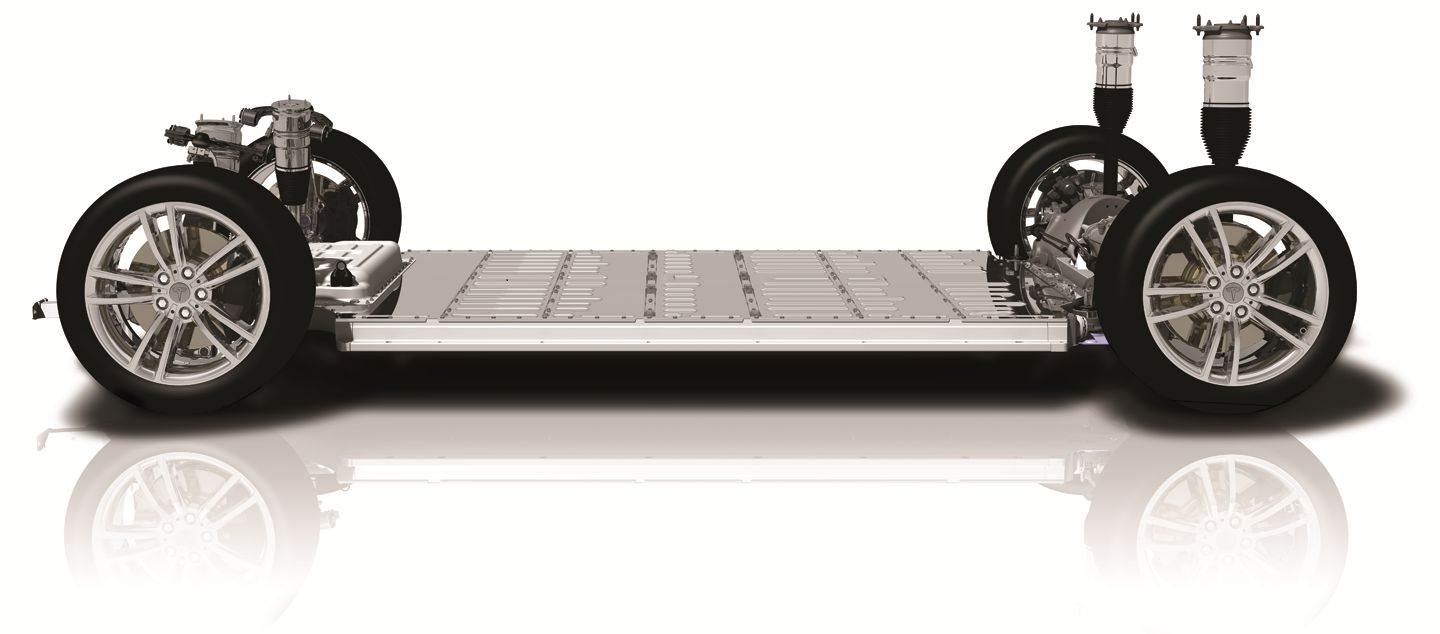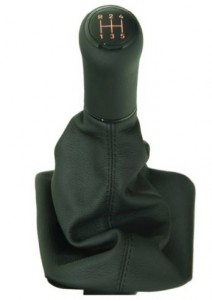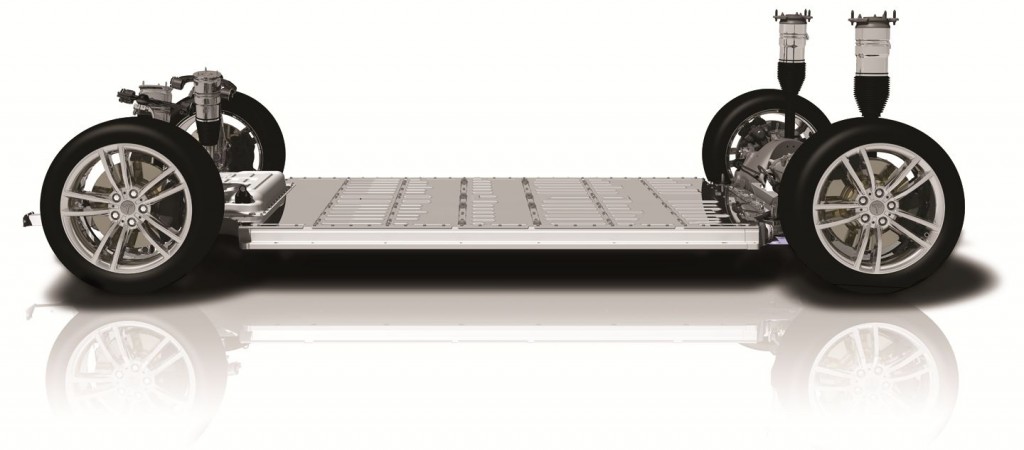Tesla Model S
What it’s like to drive a transmission-less Tesla

Like many pure electric vehicles, the Tesla Model S is missing a whole lot of extraneous stuff including a transmission, gears and a clutch. This means there’s a plethora of things that don’t need to be maintained due to component wear or failure. But it also means that the Model S has a much different driving characteristic than any other car with a transmission.
Clutches
 There are two types of transmissions in cars with a traditional gasoline-powered internal combustion engine (ICE) – automatic and manual. Manual transmission vehicles require engagement of a clutch typically through a clutch pedal. Some people prefer the direct control of the car by being able to shift through gears and engine braking through downshifting. I was one of them.
There are two types of transmissions in cars with a traditional gasoline-powered internal combustion engine (ICE) – automatic and manual. Manual transmission vehicles require engagement of a clutch typically through a clutch pedal. Some people prefer the direct control of the car by being able to shift through gears and engine braking through downshifting. I was one of them.
I’ve owned and driven a number of manual transmission cars over the years, anywhere from a cheap Ford Fiesta to a high-end Porsche 928. The feel of the clutch and quirks with shifting vary from car to car. Case in point was my 928 which I had to double clutch from time to time.
I eventually gave up driving any sort of manual transmission when my daily commute grew. Using the clutch and shifting on a manual transmission is a bear when it comes to heavy traffic. So, what does all this have to do with the Model S that has neither gears nor a clutch? The feeling.
 Driving a Tesla Model S is eerily similar to driving a manual transmission vehicle. The car will roll if you take your foot off the brake while on an incline or decline. Tesla added the “hill assist” feature in the recent 5.9 software update, but that only holds the vehicle for 1 second before the car begins rolling again.
Driving a Tesla Model S is eerily similar to driving a manual transmission vehicle. The car will roll if you take your foot off the brake while on an incline or decline. Tesla added the “hill assist” feature in the recent 5.9 software update, but that only holds the vehicle for 1 second before the car begins rolling again.
Letting go of the Model S accelerator pedal as you’re approaching a stop light will slow the vehicle down through regenerative braking which to me feels exactly like downshifting and engine braking, but without the noise.
Another thing I caught myself doing was quickly moving my foot from brake pedal to accelerator to prevent stalling the car only to realize that the Tesla will never stall. I guess it was just muscle memory.
Creep
 Tesla added a feature called “creep” which simulates the behavior of an automatic transmission.
Tesla added a feature called “creep” which simulates the behavior of an automatic transmission.
In an automatic transmission vehicle the car will begin moving forward when you let go of the brake pedal as opposed to sitting perfectly still and silent in the Model S. Creep makes this happen by moving the car forward when you let go of the brake pedal.
I took my Model S to an empty parking lot and gave the creep feature a try. You can only toggle this feature on/off when the vehicle’s in park mode. After turning on the creep setting, put the car in drive, take your foot off the brake and the Model S will begin to move forward. It starts off pretty slow but picks up speed quickly. I measured a top speed of 5 MPH which felt pretty quick to me. You can literally drive around a parking lot in this mode without stepping on either the brake or accelerator and just creep along.
I also didn’t like the idea of the car using energy unless I was specifically asking for it through the accelerator pedal. I had originally thought that the creep feature would be useful when pulling into a tight parking space but the accelerator pedal on the Model S is very well tuned for both fine and aggressive movements. Creep is not really needed in my opinion. That being said, the only time I’ve used this feature was for this particular test.
Summary

News
Tesla shocks with latest Robotaxi testing move
Why Tesla has chosen to use a couple of Model S units must have a reason; the company is calculated in its engineering and data collection efforts, so this is definitely more than “we just felt like giving our drivers a change of scenery.”

Tesla Model S vehicles were spotted performing validation testing with LiDAR rigs in California today, a pretty big switch-up compared to what we are used to seeing on the roads.
Tesla utilizes the Model Y crossover for its Robotaxi fleet. It is adequately sized, the most popular vehicle in its lineup, and is suitable for a wide variety of applications. It provides enough luxury for a single rider, but enough room for several passengers, if needed.
However, the testing has seemingly expanded to one of Tesla’s premium flagship offerings, as the Model S was spotted with the validation equipment that is seen entirely with Model Y vehicles. We have written several articles on Robotaxi testing mules being spotted across the United States, but this is a first:
🚨 Tesla is using Model S vehicles fitted with LiDAR rigs to validate FSD and Robotaxi, differing from the Model Ys that it uses typically
Those Model Y vehicles have been on the East Coast for some time. These Model S cars were spotted in California https://t.co/CN9Bw5Wma8 pic.twitter.com/UE55hx5mdd
— TESLARATI (@Teslarati) December 11, 2025
Why Tesla has chosen to use a couple of Model S units must have a reason; the company is calculated in its engineering and data collection efforts, so this is definitely more than “we just felt like giving our drivers a change of scenery.”
It seems to hint that Tesla could add a premium, more luxury offering to its Robotaxi platform eventually. Think about it: Uber has Uber Black, Lyft has Lyft Black. These vehicles and services are associated with a more premium cost as they combine luxury models with more catered transportation options.
Tesla could be testing the waters here, and it could be thinking of adding the Model S to its fleet of ride-hailing vehicles.
Reluctant to remove the Model S from its production plans completely despite its low volume contributions to the overall mission of transitioning the world to sustainable energy, the flagship sedan has always meant something. CEO Elon Musk referred to it, along with its sibling Model X, as continuing on production lines due to “sentimental reasons.”
However, its purpose might have been expanded to justify keeping it around, and why not? It is a cozy, premium offering, and it would be great for those who want a little more luxury and are willing to pay a few extra dollars.
Of course, none of this is even close to confirmed. However, it is reasonable to speculate that the Model S could be a potential addition to the Robotaxi fleet. It’s capable of all the same things the Model Y is, but with more luxuriousness, and it could be the perfect addition to the futuristic fleet.
News
Tesla Model S makes TIME’s list of Best Inventions

Tesla’s flagship sedan, the Model S, has officially been named one of TIME Magazine’s Best Inventions of the 2000s. It joins its sibling, the Model 3, which made the list in 2017.
The Model S is among the most crucial developments in the automotive industry in the last century.
Just as the Ford Model T made its mark on passenger transportation, becoming the first combustion engine vehicle to be successfully developed and marketed at a time when horse and buggy were the preferred mode of transportation, the Model S revolutionized things a step further.
Although it was not the first EV to be developed, the Tesla Model S was the EV that put EVs on the map. In 2012, TIME recognized the Model S as a piece of technology that could truly transform the car industry.
The publication wrote:
“This electric four-door sedan has the lines of a Jaguar, the ability to zip for 265 miles (426 km) on one charge—that’s the equivalent of 89 m.p.g. (2.6 L/100 km)—and touchscreen controls for everything from GPS navigation to adjusting the suspension.”
Looking back, TIME was right on. The Tesla Model S was truly a marvel for its time, and it, along with the OG 2008 Roadster, can be seen as the first two EVs to push electrification to the mainstream.
As TIME described this year, the Model S “proved to be a game-changing experience for electric vehicles,” and it ended up truly catalyzing things for not only the industry, but Tesla as well.
The Model S acted as a fundraiser of sorts for future vehicles, just as the Model X did. They paved the way for the Model 3 and Model Y to be developed and offered by Tesla at a price point that was more acceptable and accessible to the masses.
The Current State of the Tesla Model S
The Model S contributes to a very small percentage of Tesla sales. The company groups the Model S with the Model X and Cybertruck in its quarterly releases.
Last year, that grouping sold 85,133 total units, a small percentage of the 1.789 million cars it delivered to customers in 2024.
Things looked to be changing for the Model S and the Model X this year, as Tesla teased some improvements to the two cars with a refresh. However, it was very underwhelming and only included very minor changes.
Lucid CEO shades Tesla Model S: “Nothing has changed in 12 years now”
It appeared as if Tesla was planning to sunset the two cars, and while it has not taken that stance yet, it seems more likely that the company will begin taking any potential options to heart.
CEO Elon Musk said a few years ago that the two cars were only produced due to “sentimental reasons.”
Lifestyle
Tesla Model S Plaid battles China’s 1500 hp monster Nurburgring monster, with surprising results
There is just something about Tesla’s tuning and refinement that makes raw specs seem not as game-changing.

The Tesla Model S Plaid has been around for some time. Today, it is no longer the world’s quickest four-door electric sedan, nor is it the most powerful. As per a recent video from motoring YouTube channel Carwow, however, it seems like the Model S Plaid is still more than a match for some of its newer and more powerful rivals.
The monster from China
The Xiaomi SU7 Ultra is nothing short of a monster. Just like the Model S Plaid, it features three motors. It also has 1,548 hp and 1,770 Nm of torque. It’s All Wheel Drive and weighs a hefty 2,360 kg. The vehicle, which costs just about the equivalent of £55,000, has been recorded setting an insane 7:04.957 at the Nurburgring, surpassing the previous record held by the Porsche Taycan Turbo GT.
For all intents and purposes, the Model S Plaid looked outgunned in Carwow’s test. The Model S Plaid is no slouch with its three motors that produce 1,020 hp and 1,420 Nm of torque. It’s also a bit lighter at 2,190 kg despite its larger size. However, as the Carwow host pointed out, the Model S Plaid holds a 7:25.231 record in the Nurburgring. Compared to the Xiaomi SU7 Ultra’s record, the Model S Plaid’s lap time is notably slower.
Real-world tests
As could be seen in Carwow’s drag races, however, Tesla’s tech wizardry with the Model S Plaid is still hard to beat. The two vehicles competed in nine races, and the older Model S Plaid actually beat its newer, more powerful counterpart from China several times. At one point in the race, the Xiaomi SU7 Ultra hit its power limit due to its battery’s temperature, but the Model S Plaid was still going strong.
The Model S Plaid was first teased five years ago, in September 2020 during Tesla’s Battery Day. Since then, cars like the Lucid Air Sapphire and the Xiaomi SU7 Ultra have been released, surpassing its specs. But just like the Model Y ended up being the better all-rounder compared to the BYD Sealion 7 and the MG IM6, there is just something about Tesla’s tuning and refinement that makes raw specs seem not as game-changing.
Check out Carwow’s Model S Plaid vs Xiaomi SU7 drag race video below.








